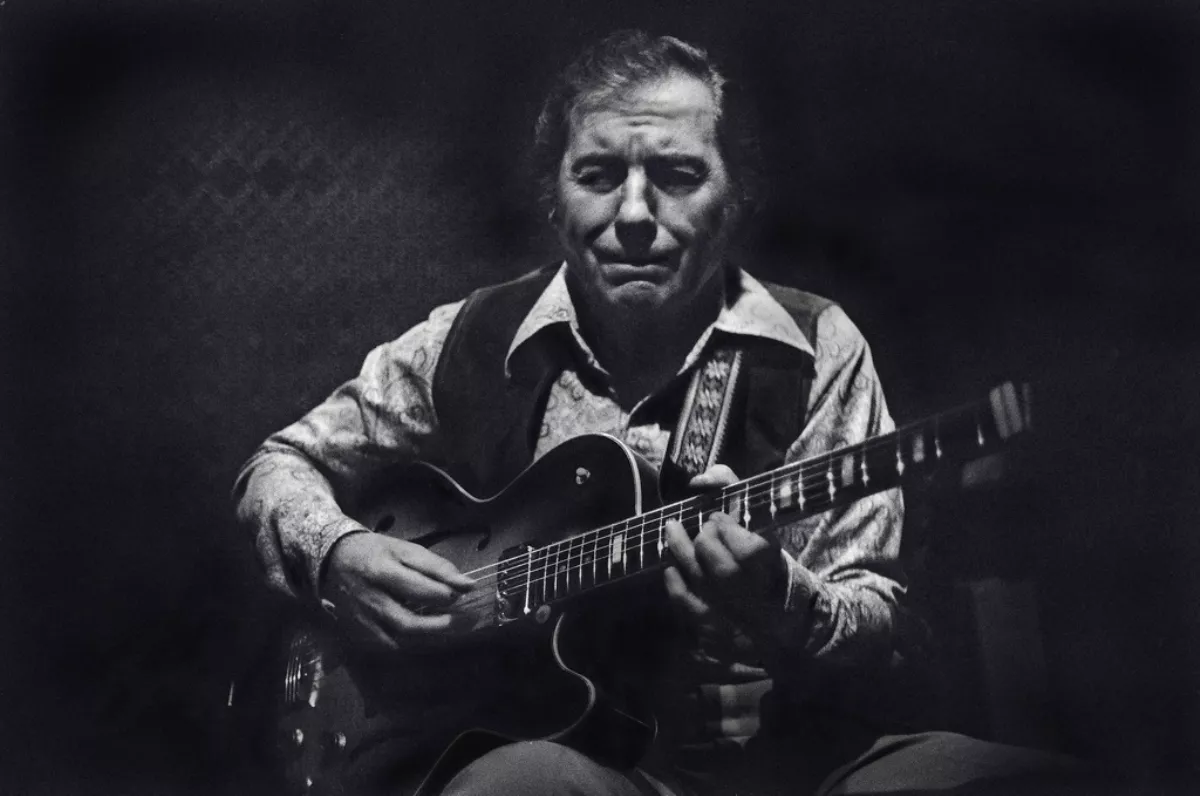 1.
1. Chuck Wayne came to prominence in the 1940s, and was among the earliest jazz guitarists to play in the bebop style.

 1.
1. Chuck Wayne came to prominence in the 1940s, and was among the earliest jazz guitarists to play in the bebop style.
Chuck Wayne developed a systematic method for playing jazz guitar.
Chuck Wayne was known for a bebop style influenced by saxophone players of his time, especially Charlie Parker and Coleman Hawkins.
Chuck Wayne was born Charles Jagelka in New York City to a Czechoslovakian family.
Chuck Wayne changed his musical style after hearing Charlie Parker, recording with Dizzy Gillespie in 1945.
Bill Crow writes that Chuck Wayne was one of the first jazz guitarists to learn bebop.
Chuck Wayne was a member of Woody Herman's First Herd and worked with Coleman Hawkins, Red Norvo, Bud Powell, Jack Teagarden, George Shearing, Lester Young, and Barbara Carroll.
Chuck Wayne was employed as staff guitarist for CBS in the 1960s.
Chuck Wayne died of emphysema in Jackson, New Jersey, aged 74.
Chuck Wayne recorded in a trio for Tapestry and Morning Mist and in a duo with Joe Puma on Interactions.
Chuck Wayne recorded an album of banjo jazz in 1963.
Chuck Wayne loved the crisp, hornlike sound that was possible with the banjo, and he predicted there would be a resurgence of interest in the banjo.
Chuck Wayne invented a system of playing jazz guitar that emulated the style of Charlie Parker.
Chuck Wayne's system included consecutive-alternate picking, chords, scales, and arpeggios.
Chuck Wayne was an exponent of the use of the right-hand fingers in combination with the pick.
Chuck Wayne's use of the technique for contrapuntal improvisation was an innovation.
Chuck Wayne observed that most guitar chords in common use do not have these properties and that the way most guitarists play a G7 chord, for example, sounds different from the way they play a C7 or an E7 due to the different arrangements of notes.
Chuck Wayne tried to describe the "complete" scope of harmonic possibilities available on the fretboard, in all voicings, given conventional guitar tuning and a human left hand.
For chords containing five or more notes, such as thirteenths and ninths, Chuck Wayne removed the root, and other notes if necessary, to preserve the generic four-note form.
Chuck Wayne's focus on four-note generic chords reflects the realities of left hand fingering on a six-string guitar.
Chuck Wayne was trying to give the guitarist the harmonic vocabulary and flexibility available to pianists.
Chuck Wayne found that the most useful generic fingerings could be obtained by raising or lowering one or more of the four notes by an octave.
Surprisingly, Chuck Wayne's approach reveals many chord forms that are comfortable to play but rarely seen, except in classical guitar fingerings.
In Chuck Wayne's heyday, experienced guitarists were often puzzled to watch him playing chord shapes that they didn't even recognize, chords with subtle differences from the norm.
Chuck Wayne provides many other fingering patterns in his "Scales" method book.
The arpeggios in Chuck Wayne's system were explained in his book with his student, Ralph Patt.
Present day jazz guitarists refer to the harp-like sound as "sweep" although Chuck Wayne disliked this term since it refers to a broom.
Since Chuck Wayne was an advanced classic guitarist as well as a plectrum player, he combined the two forms to play octaves.
Chuck Wayne's left hand used the "skip one" string form, which is using the index finger for the low note and the fourth finger for the upper note.